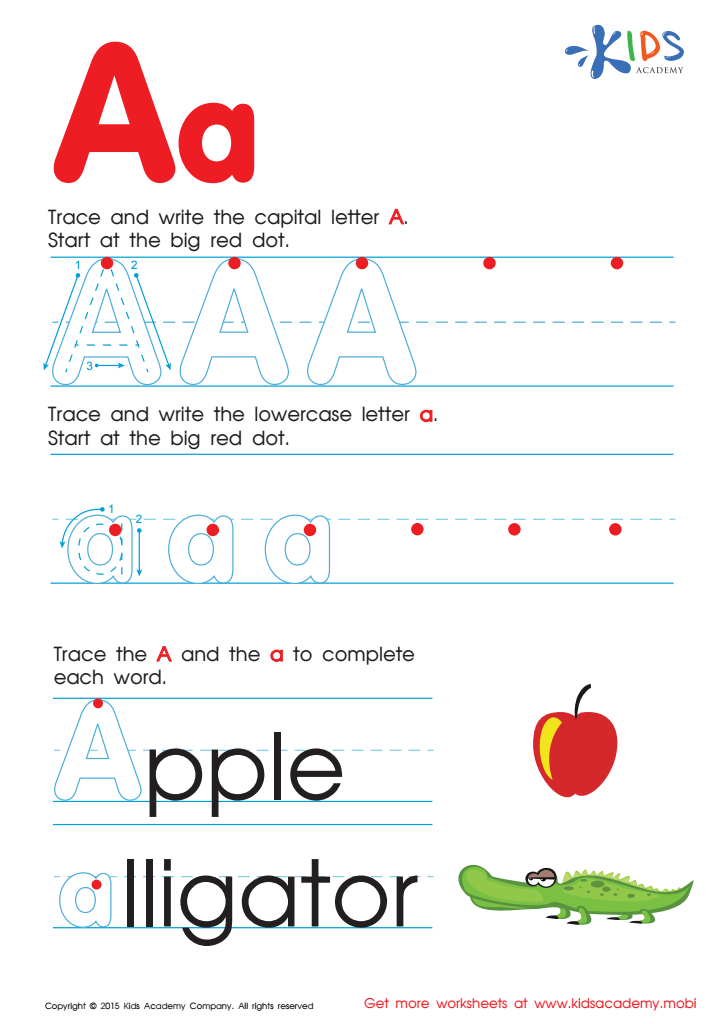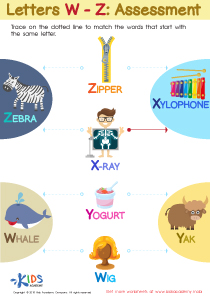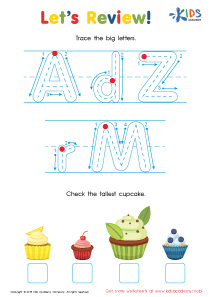Letter formation Preschool Tracing Letters Worksheets
3 filtered results
-
From - To
Discover our engaging "Letter Formation Preschool Tracing Letters Worksheets"! Designed for young learners, these printable worksheets help children master the art of letter formation through captivating tracing activities. Each worksheet guides preschoolers in understanding letter shapes and strokes essential for early writing skills. Our resources encourage fine motor development, improve hand-eye coordination, and enhance recognition of uppercase and lowercase letters. With vibrant designs and interactive exercises, children will enjoy practicing their letters while boosting their confidence. Start your child's journey to writing effortlessly with our comprehensive collection of tracing worksheets and foster their love for learning today!


Letter A Tracing Page


Letter P Tracing Page


Letter G Tracing Page
Letter formation is a foundational skill for young learners and is crucial in preschool for several reasons. First, it fosters writing readiness; when children practice tracing letters, they develop the fine motor skills necessary for holding a writing instrument correctly, which sets the stage for successful handwriting.
Additionally, proper letter formation aids in literacy development. Children who learn to accurately form letters are better equipped to recognize them, which ultimately supports reading and writing fluency. This skill promotes the connection between sounds and letters, allowing kids to transition into spelling and constructing words more confidently.
Moreover, tracing letters in preschool helps establish a structure and system in learning. When children consistently practice writing letters in a specific way, they develop cognitive skills tied to memorization and repetition. This consistency forms a strong foundation that can enhance their academic journey.
Finally, encouraging good letter formation fosters a sense of pride and accomplishment. As children gradually improve their writing skills, they gain confidence in expressing themselves through written communication. For parents and teachers, supporting letter formation is a vital investment in developing not just writers, but confident, literate individuals.

 Assign to My Students
Assign to My Students
















